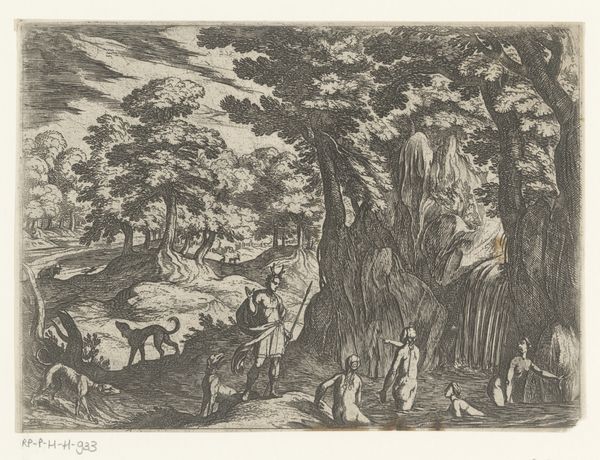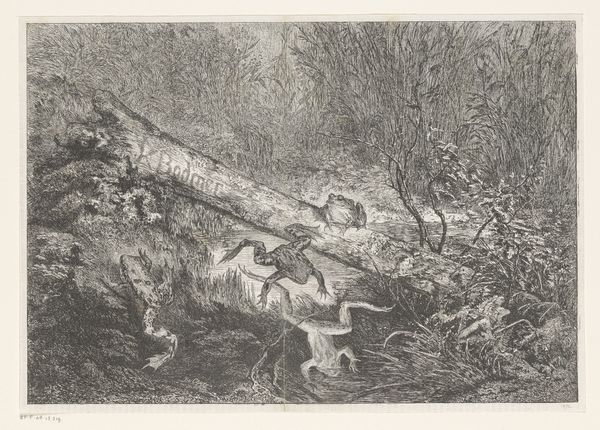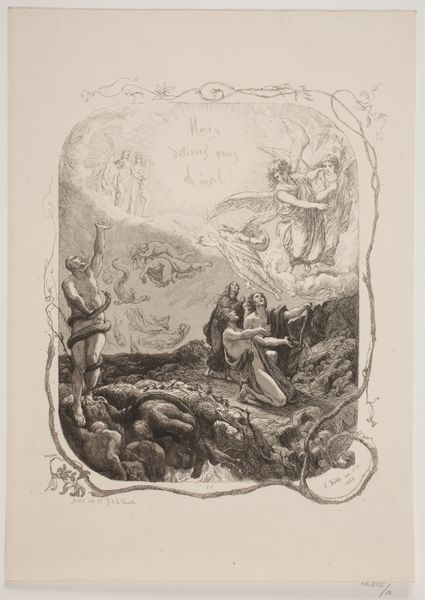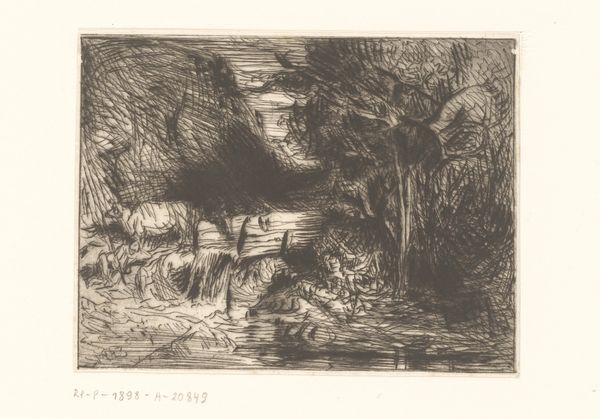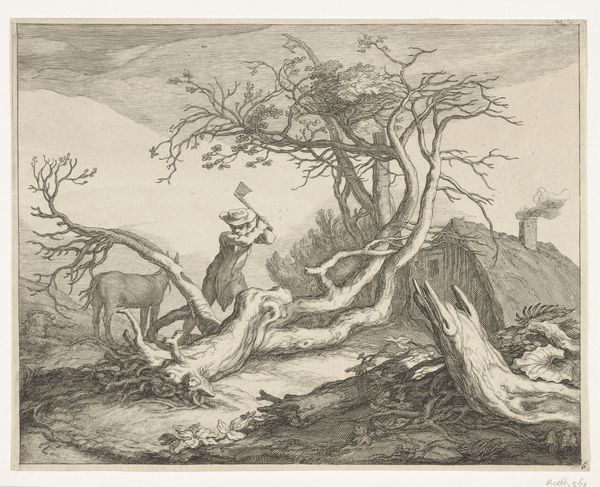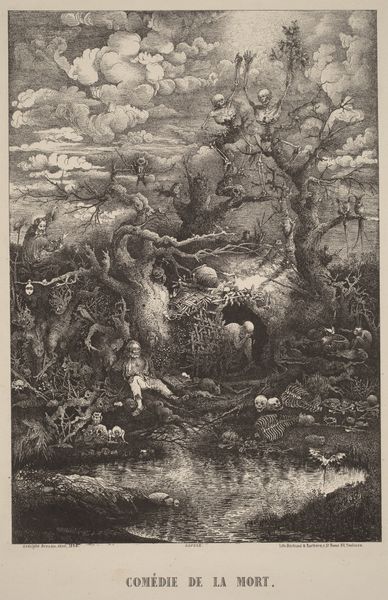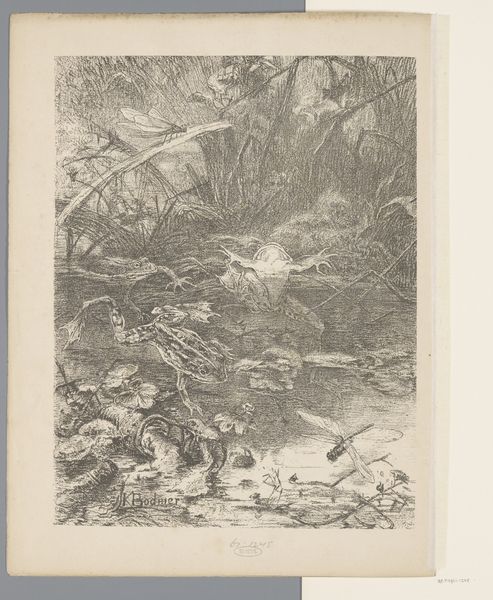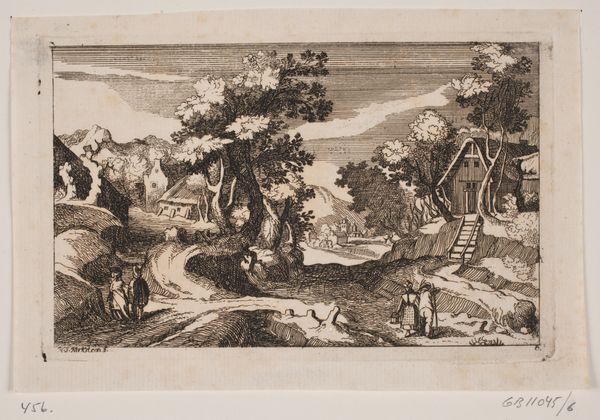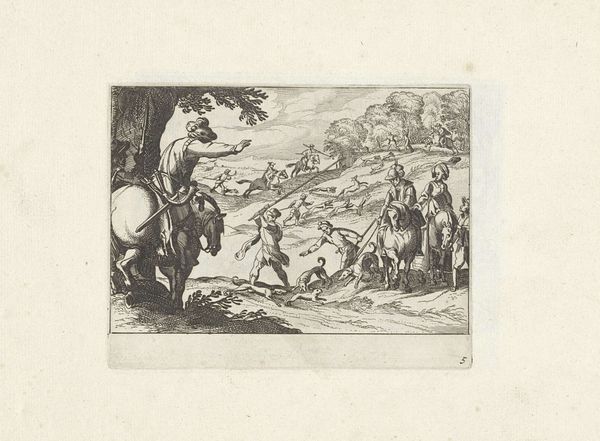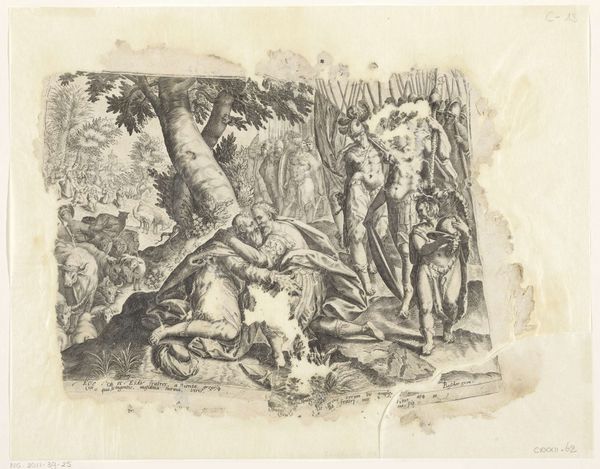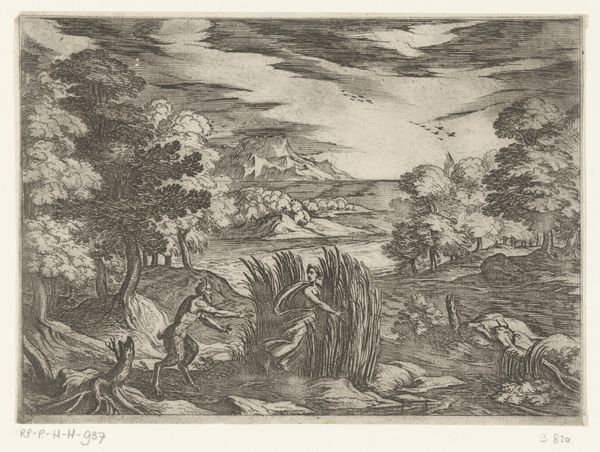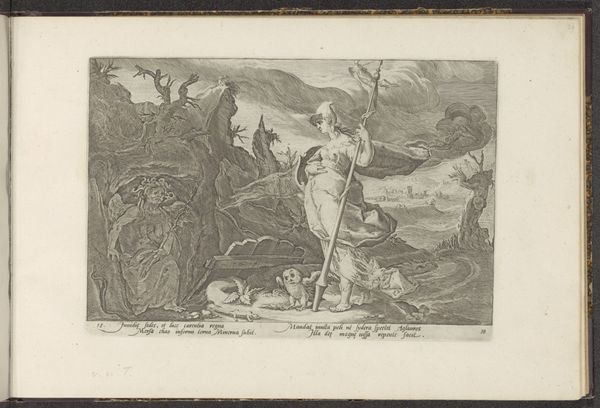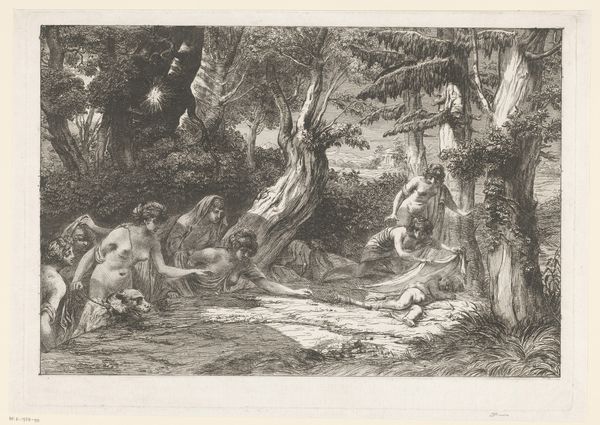
engraving
#
allegory
#
narrative-art
#
baroque
#
landscape
#
figuration
#
history-painting
#
italian-renaissance
#
engraving
Dimensions: height 145 mm, width 192 mm
Copyright: Rijks Museum: Open Domain
Antonio Tempesta made this dramatic landscape depicting the abduction of Proserpina as an etching, sometime between 1570 and 1630. The magic is in the making. Etching is an indirect process, and begins with a metal plate, usually copper. The artist covers the plate with a waxy, acid-resistant ground, then draws through it with a sharp needle to expose the metal. When the plate is immersed in acid, the drawn lines are "bitten" into the surface. After the ground is removed, ink is applied, filling the etched lines. The plate is then pressed onto paper, transferring the image. Consider how this particular process, requiring immense patience and control, lends itself to Tempesta's subject matter. The linear precision creates a scene teeming with tension, a world on the brink. The acid, biting into the metal, mirrors the violence of the abduction itself. Ultimately, this print demonstrates that materials and making are never neutral; they deeply inform an artwork's meaning.
Comments
No comments
Be the first to comment and join the conversation on the ultimate creative platform.
